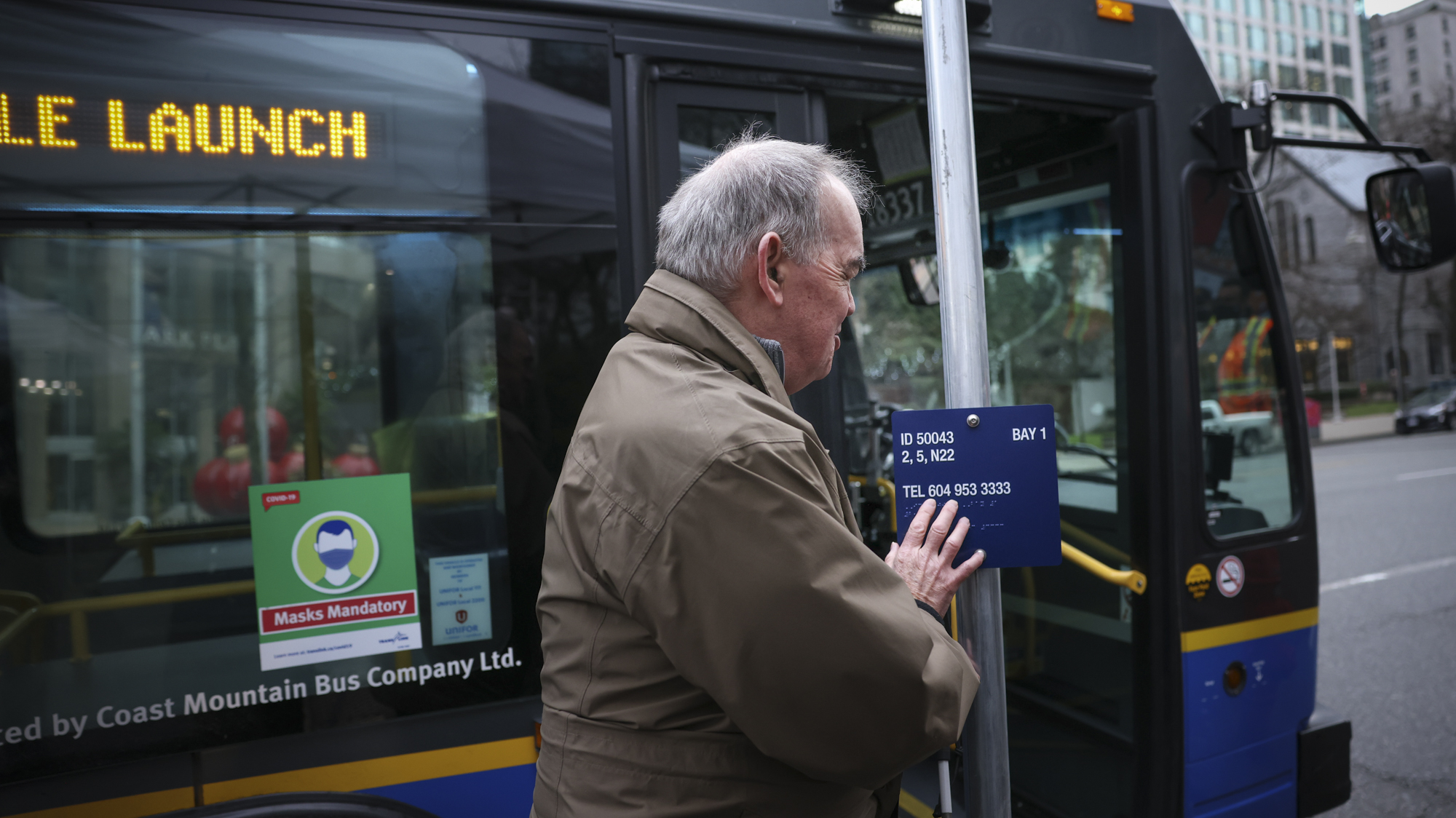5 ways we’re working towards making transit accessible for all
5 ways we’re working towards making transit accessible for all

Getting around shouldn’t have barriers. At TransLink, we’re committed to providing accessible transit for everyone, at all ability levels. With the help of feedback from our communities and customers, we continue to improve infrastructure, vehicles, and training programs to better serve transit users of all abilities.
Our vision? Completely accessible transit for everyone. We’re committed to achieving this goal as part of Transport 2050, and here are some of the ways we’re already making progress!
1. Braille signage at every stop
Did you know that TransLink is the first Canadian transit system to implement braille signage at every bus stop? Over 8,400 bus stops across the region now feature this inclusive design.
In addition, we include tactile walking surface indicators at every bus stop on TransLink-owned property. These textured ground indicators help blind or partially sighted passengers locate the bus stop and guide them to the bus’s front door.
2. Providing services for those with varying abilities
TransLink provides a few different services meant for better accessibility of our transit system. Our HandyDART program offers a door-to-door, shared-ride service for passengers with physical or cognitive disabilities who cannot use standard public transit without help. The driver assists you from your home, helps you board the vehicle, and ensures you reach the doorstep of your destination safely.
In our Travel Smart program, TransLink collaborates with organizations across the region to conduct informational workshops for large groups of seniors and individuals with disabilities. This program works with individuals, local businesses, community and non-profit groups to ensure our services are accessible to all.
We’ve also partnered with CNIB to provide CNIB ID Compass Cards that provide transit users who are legally blind with unlimited travel on transit.
3. Modifying current infrastructure to be more accessible
Our 2023 Accessibility Plan rounds up what we’re currently doing to make transit more accessible, including timelines, ongoing projects, and plans we want to implement in the future. It’s a great resource for those looking to better understand accessibility options on transit and provides contact information if you have any suggestions. Some on-going projects to improve accessibility include enhancing amenities at bus exchanges, replacing older HandyDART vehicles, and replacing escalators to make them more reliable and accessible.
The Universal Fare Gate Access Program offers fare gate access to customers with disabilities who cannot physically tap their Compass Card at SkyTrain stations and SeaBus terminals. This program was the first of its kind, globally, when launched in 2018.
We issue eligible customers a radio-frequency identification (RFID) enabled card that automatically opens accessible fare gates as they approach and can easily be attached to mobility aids or assistive devices.
These fare gates have special sensors that won’t close until the user has made it through, making sure the gates do not close too soon or too late.
4. Forming an Access Transit Users’ Advisory Committee
The Access Transit Users’ Advisory Committee (UAC) was established in response to feedback received during the Access Transit Strategy review. The UAC continuously guides TransLink’s plans, programs, and initiatives, ensuring consistent attention to accessibility concerns.
UAC champions accessibility for all, advising TransLink year-round.
5. Creating opportunities for training staff
Training is an important part of making sure transit is accessible to everyone. As part of our commitment to accessibility, our training programs include Sky Train Attendants, Transit Operators, Customer Information and more. Our 2023 Accessibility Plan also outlines our disability inclusion and awareness training for all TransLink employees.
Looking to learn more about our commitment to accessibility? Check out our Transit Accessibility page and view our Accessible Transit Guide here.






This is what I wanna find. Thanks